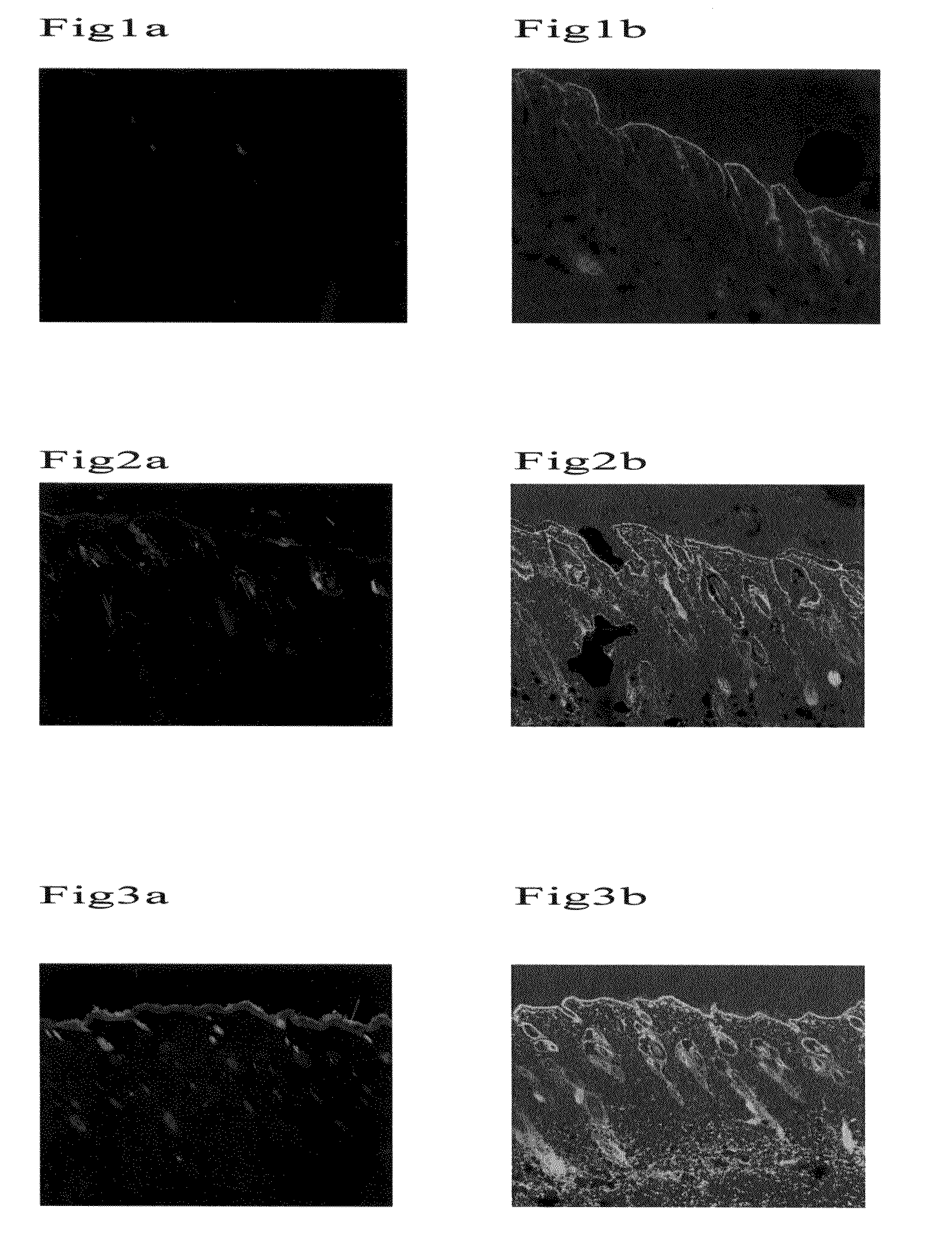Anti-acne skin agent for external use
a skin agent and anti-acne technology, applied in the direction of capsule delivery, dermatological disorder, drug composition, etc., can solve the problems of insufficient effect, affecting the skin, and affecting the appearance of acne, so as to achieve high permeability into skin, high safety of protein nanoparticles, and high transparency
- Summary
- Abstract
- Description
- Claims
- Application Information
AI Technical Summary
Benefits of technology
Problems solved by technology
Method used
Image
Examples
example 1
[0107]Milk-derived casein (100 mg; Wako Pure Chemical Industries, Ltd.) was mixed with 50 mM phosphate buffer (pH 10, 10 mL). Coumarin 6 (0.015 mg; Wako Pure Chemical Industries, Ltd.) was dissolved in ethanol (0.1 mL). The two different solutions were mixed together. Hydrochloric acid was added thereto so that the pH was adjusted to 7.5. Thus, casein nanoparticles were obtained.
[0108]The average particle size of the above particles was measured with “Nanotrac,” a light scattering photometer (NIKKISO Co., Ltd.), and it was found to be 29 nm.
example 2
[0109]Milk-derived casein Na (10 mg; Wako Pure Chemical Industries, Ltd.) was mixed with a 50 mM phosphate buffer (pH 9; 1 mL). Glycyrrhetic acid (1.7 mg; Wako Pure Chemical Industries, Ltd.) was dissolved in ethanol (0.25 mL). The glycyrrhetic acid solution was added dropwise to the casein solution during stirring. The resulting liquid mixture (1 ml) was injected into 200 mM phosphate buffer water (pH 5; 10 mL) with the use of a microsyringe at an external temperature of 40° C. during stirring at 800 rpm. Thus, a water dispersion of casein nanoparticles containing glycyrrhetic acid was obtained.
[0110]The average particle size of the above particles was measured with “Microtrac,” a light scattering photometer (NIKKISO Co., Ltd.), and it was found to be 83 nm.
example 3
[0111]Milk-derived casein (20 mg; Wako Pure Chemical Industries, Ltd.) and protamine sulfate (1 mg; Wako Pure Chemical Industries, Ltd.) were mixed with a 50 mM phosphate buffer (pH 10; 1 mL). α-lipoic acid (1 mg) was dissolved in ion-exchange water. The two types of solutions were mixed together. The resulting liquid mixture (1 ml) was injected into 200 mM phosphate buffer water (pH 5; 10 mL) with the use of a microsyringe at an external temperature of 40° C. during stirring at 800 rpm. Thus, casein nanoparticles were obtained.
[0112]The average particle size of the above particles was measured with “Nanotrac,” a light scattering photometer (NIKKISO Co., Ltd.), and it was found to be 48 nm.
PUM
| Property | Measurement | Unit |
|---|---|---|
| Fraction | aaaaa | aaaaa |
| Fraction | aaaaa | aaaaa |
| Acidity | aaaaa | aaaaa |
Abstract
Description
Claims
Application Information
 Login to View More
Login to View More - R&D
- Intellectual Property
- Life Sciences
- Materials
- Tech Scout
- Unparalleled Data Quality
- Higher Quality Content
- 60% Fewer Hallucinations
Browse by: Latest US Patents, China's latest patents, Technical Efficacy Thesaurus, Application Domain, Technology Topic, Popular Technical Reports.
© 2025 PatSnap. All rights reserved.Legal|Privacy policy|Modern Slavery Act Transparency Statement|Sitemap|About US| Contact US: help@patsnap.com



